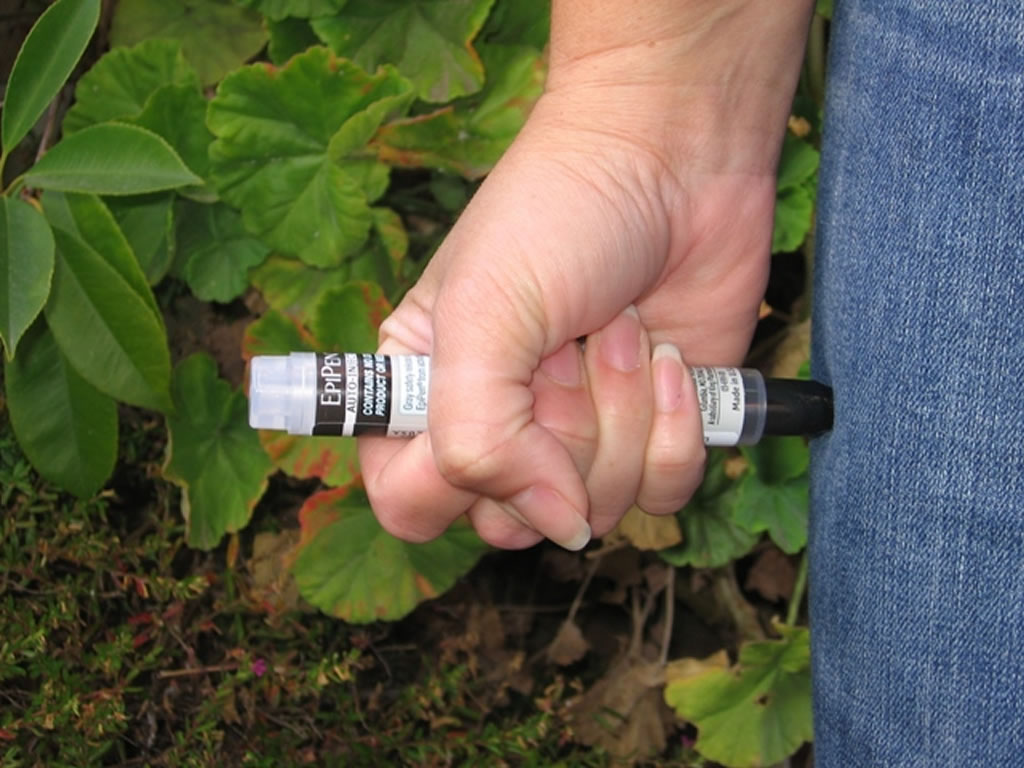Epinephrine is the only effective treatment for anaphylaxis – the life-threatening reaction that may occur as the result of a severe allergy – and the means for carrying and administering epinephrine is the auto-injector. US News & World Report recently published an article bringing a long-simmering debate to the foreground: are the needles used in current auto-injectors long enough to deliver epinephrine effectively in people who are obese?
There are two versions of epinephrine auto-injector approved for use in the US: a half-dose for young children weighing less than 66 pounds, and a full-dose of 0.30 mg for adults and children weighing more. Few people realize that the needle lengths for the two doses also vary: for example, for the EpiPen Jr the needle length is 1/2″, for EpiPen the length is 5/8″. That needle length is calculated to deliver epinephrine through clothing, skin and subcutaneous fat to the thigh muscle.
In a study published a year ago in Allergy, Asthma & Clinical Immunology, researchers measured the muscle depth of 100 participants with severe food allergies and found that 19%, all women, had a depth that was greater than the needle length.
“The jury is still out as to the importance of a longer needle,” says Dr. Phil Lieberman, a member of the American College of Allergy, Asthma and Immunology (ACAAI). “The theoretical observation, supported by three very small studies in both adults and children, is that the most rapid-acting administration of epinephrine is through the mid-thigh into the muscle called the vastus lateralis,” he says. According to the article, the ACAAI is scheduled to publish updated guidelines next month.
The three auto-injectors currently approved for sale in the US are Mylan’s EpiPen, Sanofi’s Auvi-Q, and Amedra’s Adrenaclick. The article describes Emerade, a brand of epinephrine auto-injector available in the UK that is offered in two adult doses prescribed based on body weight, both with needles almost a full inch long. Emerade is not currently available in the US.





